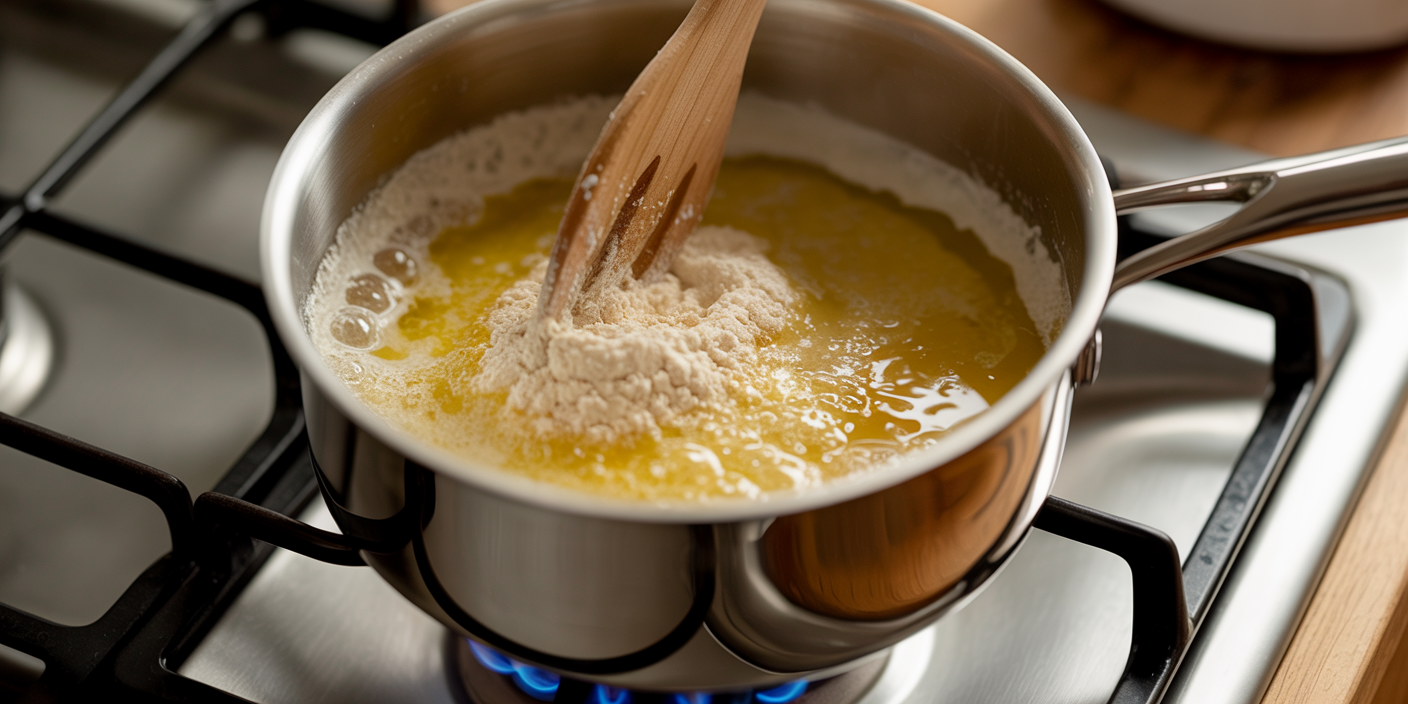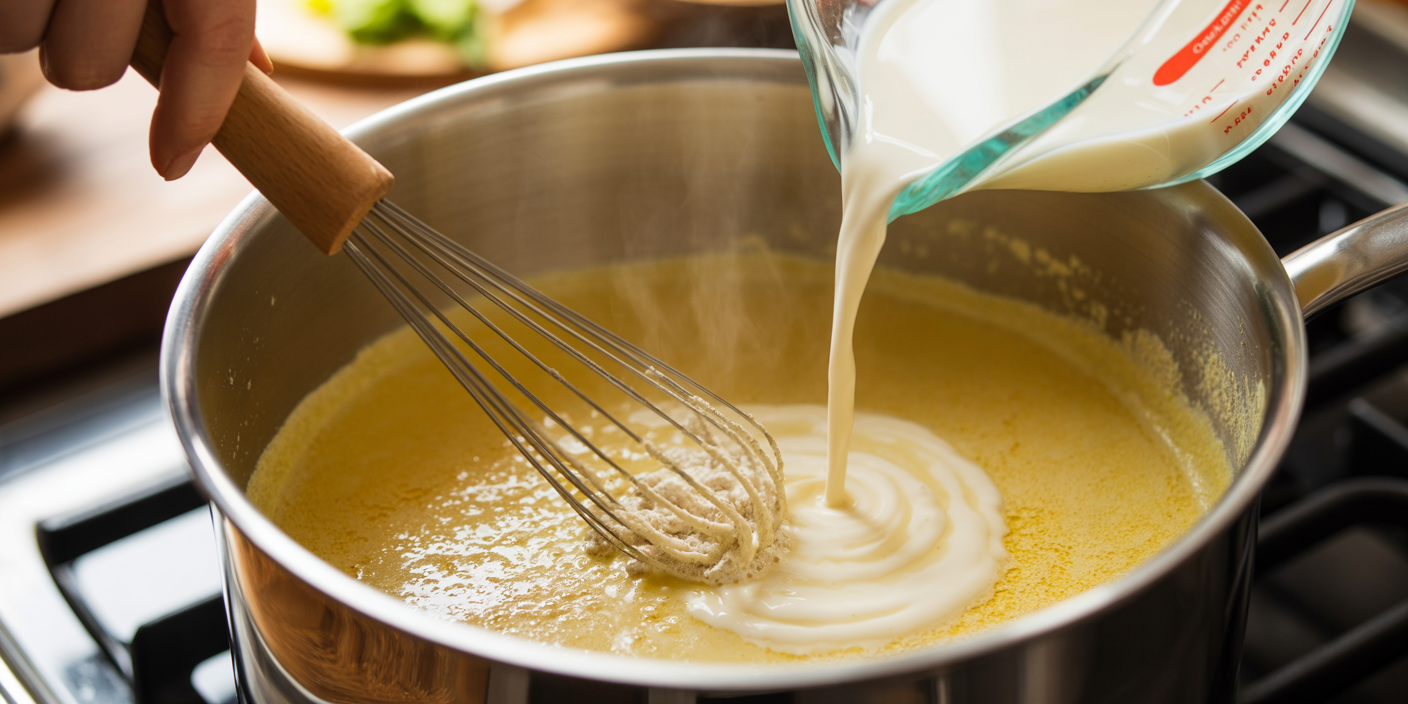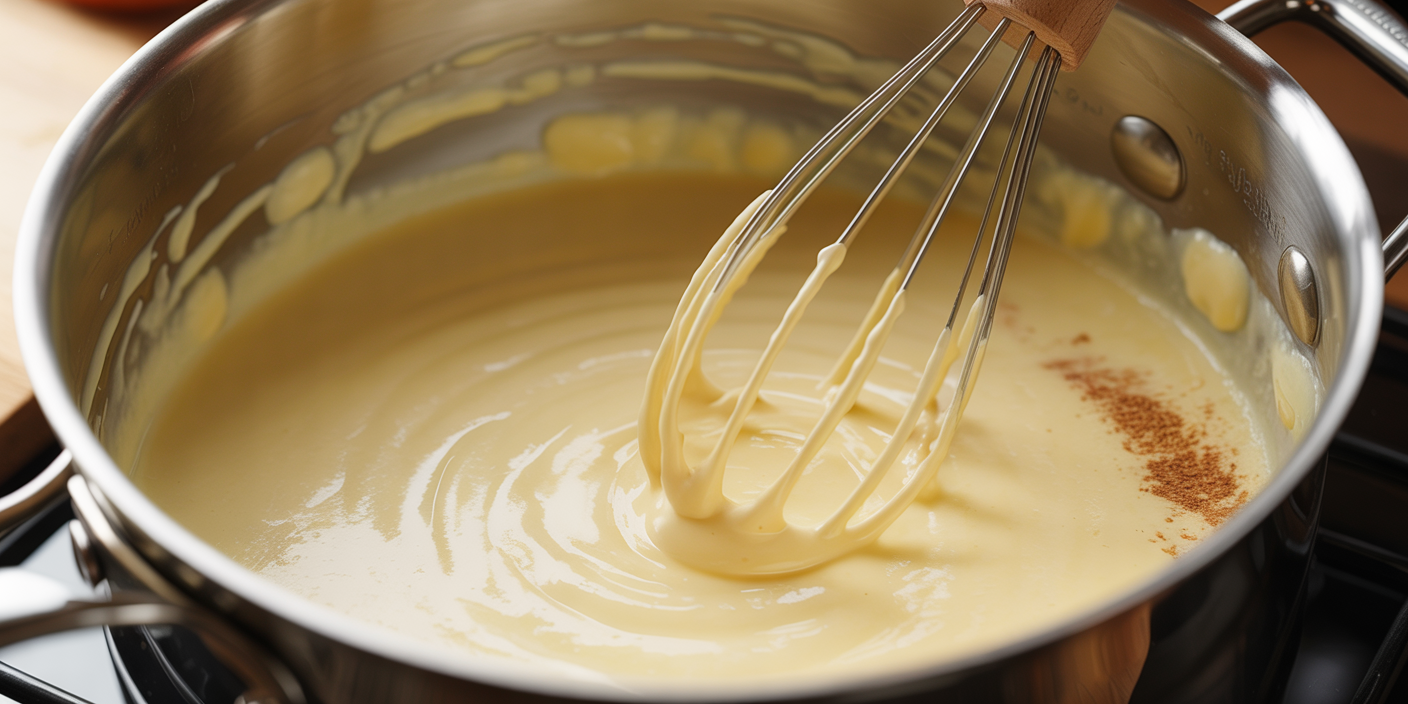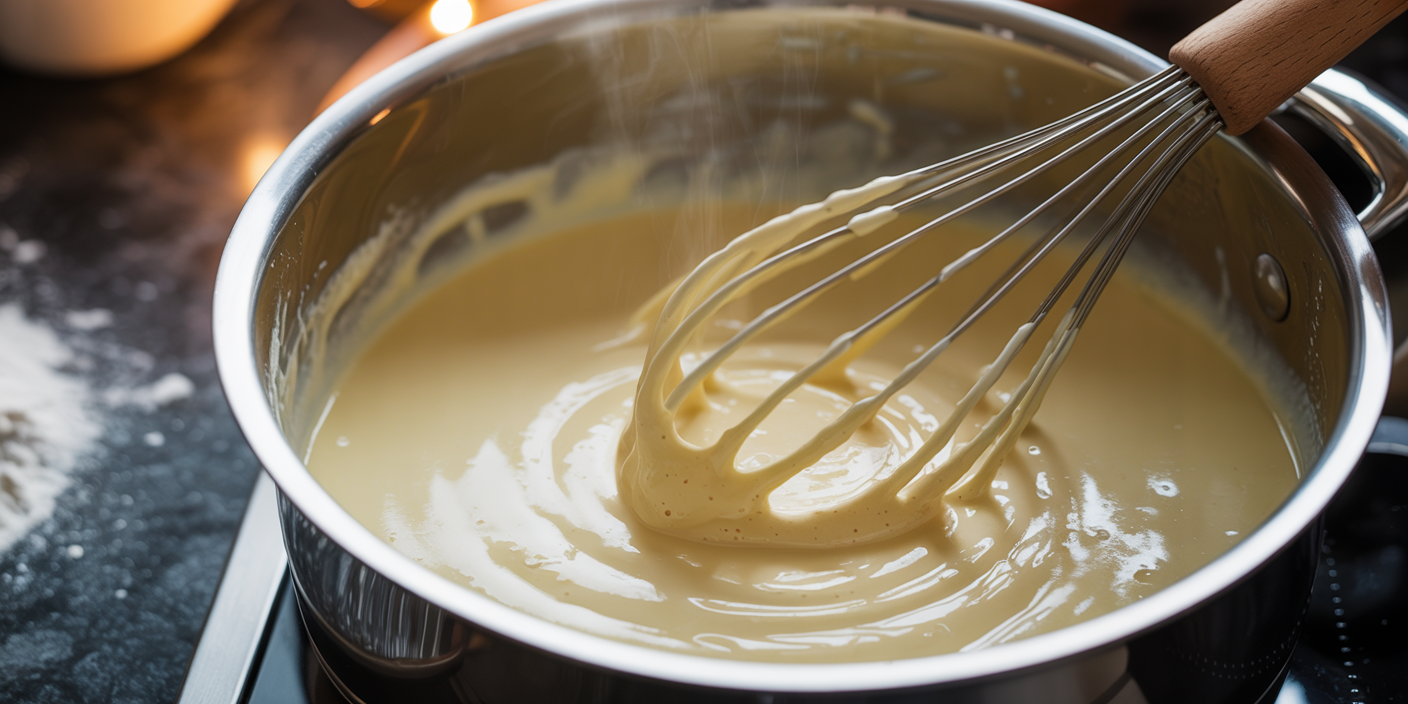The Timeless Elegance of Béchamel Sauce
Béchamel sauce, often called the mother of all white sauces, is a silky, creamy, and versatile French sauce that has been a cornerstone of classical and modern cooking. Known for its smooth texture and subtle flavor, Béchamel is a staple in dishes ranging from creamy lasagna and gratins to delicate soufflés and creamy pasta sauces. Its beauty lies in its simplicity, yet it forms the foundation for countless derivative sauces, making it essential for any home cook or professional chef seeking to master classic French culinary techniques.
Making homemade Béchamel sauce allows you to achieve a rich, creamy consistency with a luxurious mouthfeel that elevates every dish it touches. With the right technique, you can transform a basic meal into a gourmet experience. For another fundamental French sauce to expand your culinary skills, check out this detailed guide:
👉 How to Make Espagnole Sauce
Origins and Culinary History of Béchamel
The origins of Béchamel sauce date back to 17th century France, credited to Louis de Béchameil, a steward to King Louis XIV. It quickly became a quintessential element of French haute cuisine, celebrated for its versatility, elegance, and simplicity. Today, Béchamel remains a core French mother sauce, forming the basis for Mornay, mustard sauce, cream sauce, and other classic derivatives.
Historically, chefs used Béchamel to bind ingredients together while providing creaminess. Over time, it evolved into a foundation for comfort foods like creamy casseroles, rich gratins, and velvety soups, bridging the gap between rustic flavors and gourmet finesse.
The Science Behind Perfect Béchamel Sauce
Creating the perfect Béchamel sauce requires attention to balance, heat control, and technique:
- Roux Base: A blend of butter and flour forms a thickening base, cooked until lightly golden to prevent a raw flour taste.
- Milk Integration: Gradual whisking of milk into the roux creates a smooth, lump-free texture.
- Seasoning: Nutmeg, salt, and white pepper enhance flavor without overpowering the sauce’s delicate profile.
- Consistency: Depending on your dish, Béchamel can be thickened for gratins or kept lighter for creamy soups and pasta sauces.
Béchamel is prized for its silky, creamy texture and neutral yet rich flavor, making it a versatile base for both savory and delicate preparations.
Pro Tips for Mastering Béchamel Sauce
Use Room Temperature Milk
Gradually add warm or room-temperature milk to the roux to prevent lumps and achieve a smooth consistency.
Constant Whisking
Whisk continuously during cooking to avoid clumps and ensure even thickening.
Flavor Enhancements
For depth, infuse milk with bay leaves, onion, or cloves before incorporating it into the roux.
Adjust Thickness
Control sauce thickness by altering cooking time or milk quantity. Thicker for lasagna or gratins, thinner for pasta or creamy soups.
Storage & Versatility
Béchamel can be refrigerated for up to 3 days or frozen for longer use, ready to serve as a base for derivative sauces like Mornay or mustard cream sauce.
Creative Uses and Serving Suggestions
- Lasagna: Layer Béchamel with tomato sauce and cheese for a luxurious, creamy lasagna.
- Gratins: Pour over potatoes or vegetables, top with cheese, and bake until golden and bubbling.
- Pasta Sauces: Transform Béchamel into a cheese sauce for macaroni or penne.
- Soufflés: Use as a base for savory soufflés, providing structure and creaminess.
- Creamy Casseroles: Bind ingredients in a rich, velvety sauce for comfort food elevated to gourmet standards.
Conclusion
Béchamel sauce is an essential French culinary skill, offering a silky, creamy, and neutral base that enhances a wide variety of dishes. From its historic origins in royal French kitchens to modern comfort foods, mastering this sauce allows cooks to create gourmet textures and flavors effortlessly. Perfect for lasagna, gratins, pasta, and creamy casseroles, Béchamel’s versatility ensures it remains a foundation in both classic and contemporary kitchens.









